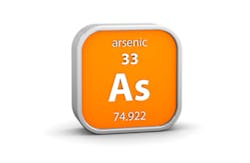VAN PHUC, Vietnam — A new decade-long study that focused on the small village of Van Phuc in Vietnam has found that large-scale over-pumping of groundwater in the village is drawing naturally high levels of arsenic in groundwater into clean aquifers, according to an article on Australian Network News.
While the World Health Organization guidelines for arsenic in drinking water are 10 micrograms per liter, concentrations in Van Phuc are 10 to 300 times higher than that, the article reported.
"The phenomena we observe in Van Phuc village can be considered as a typical natural phenomena of arsenic contamination in the whole of the Red River Delta," said study co-author Pham Hung Viet of the Hanoi University of Science. "It can be considered one of the most densely populated areas in the world, with about 17 to 20 million people living in these area."
According to the article, arsenic poisoning over a long period of time causes skin, lung, bladder and kidney cancers and visible disfiguring skin lesions.
Pumping for municipal water supplies has doubled between 2000 and 2010 in the village, the article reported, and nearby Hanoi's population of six and a half million is growing by 400,000 each year, causing more and more pressure on the water supply.
Read the article in its entirety here.
